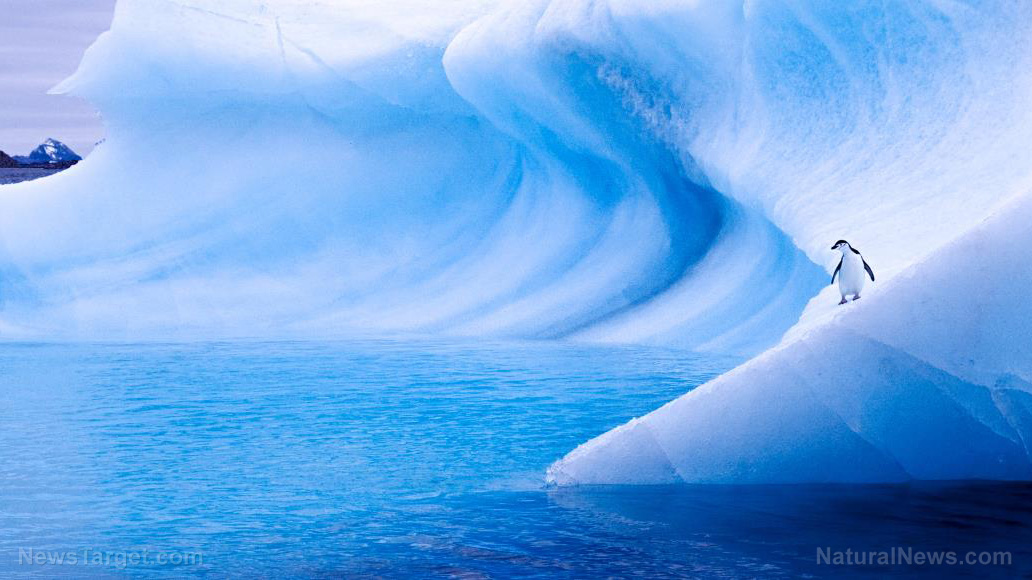by Ethan Huff, Natural News:
 Mainstream “news” is littered with scare stories about how global warming has apparently gotten so bad that the Antarctic ice shelves are melting. The truth, though, is that Antarctica’s ice shelves are actually growing in size.
Mainstream “news” is littered with scare stories about how global warming has apparently gotten so bad that the Antarctic ice shelves are melting. The truth, though, is that Antarctica’s ice shelves are actually growing in size.
New research published by Andreasen et al. looks at Antarctic-wide satellite data collected between 2009 and 2019. The data was compiled using Moderate Resolution Imaging Spectroradiometer, or MODIS.
TRUTH LIVES on at https://sgtreport.tv/
Between the 10-year period analyzed, Andreasen et al. discovered that the Antarctic ice shelf area grew in size by 5305 km2. Eighteen ice shelves did retreated in size somewhat during that time, but 16 others grew larger in terms of their overall area mass.
“Our observations show that Antarctic ice shelves gained 661 Gt of ice mass over the past decade,” the researchers noted in their paper.
(Related: When the next “catastrophe” strikes, climate-related or otherwise, Erie County, N.Y., is ready to impose more lockdowns – only “essential workers” with “movement passes” will be allowed to travel.)
Numerous studies confirm: Antarctic ice is doing just fine
Another study published by Banwell et al. that appears in the journal Geophysical Research Letters looked at an even wider range of Antarctic ice data ranging from 1980 through 2021. That study utilized microwave satellite data from the snow model SNOWPACK.
Like the first study, this second one, which was published in 2023, found that the highest meltwater volumes occurred on Antarctica’s Peninsula, reaching a peak in 1992 and 1993, as well as in 1994 and 1995. SNOWPACK calculated “a small, but significant, decreasing trend in both annual melt days and meltwater production volume over the 41 years.”
Another paper published by Frazer et al. in the journal Nature backs these findings even further. This one explains that while dramatic ice losses are occurring in some areas of Antarctica, including in West Antarctica from Pine Island and the Thwaites glaciers, ice projections for the future cannot be accurately made.
This study, which looked at a time period ranging from 2003 through 2015, identified extensive glacial retreat and acceleration along the Bellinghausen Sea coastline. Conversely, things look rather well on the ice front along the Amundsen Sea.
“Our results provide direct observations that the pace, magnitude and extent of ice destabilization around West Antarctica vary by location, with the Amundsen Sea response most sensitive to interdecadal atmosphere-ocean variability,” the authors wrote.
Finally, another paper published by Baico et al., also in 2023, found that over the centuries, Antarctic ice has both thinned and thickened, depending on the time period.
The authors looked at subglacial bedrock cores to discover that the West Antarctic Ice Sheet (WAIS) between the Thwaites and Pope glaciers “was at least 35 m (meters) thinner than present in the past several thousand years and then subsequently thickened.”




